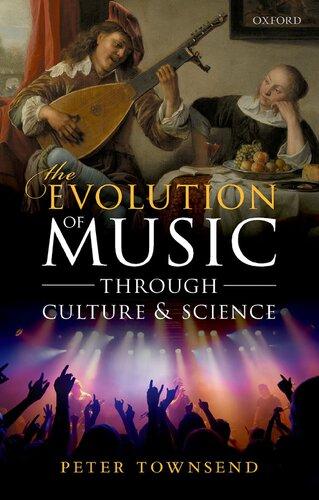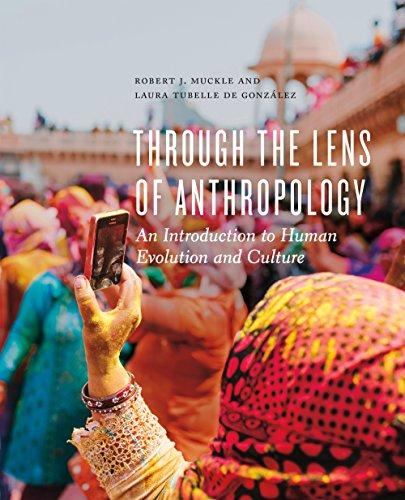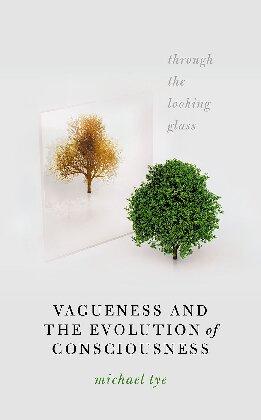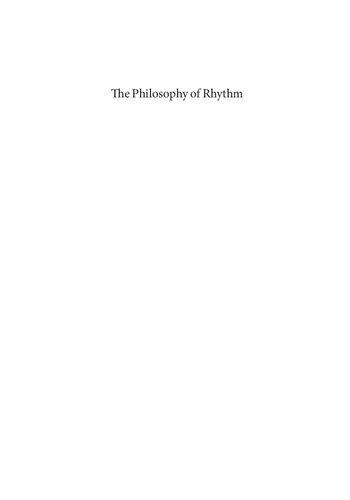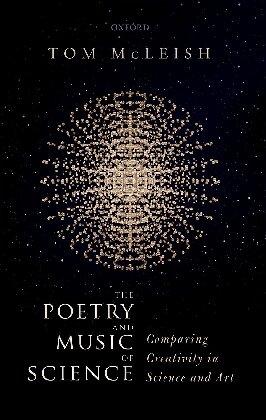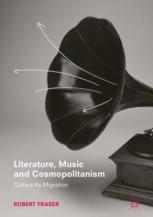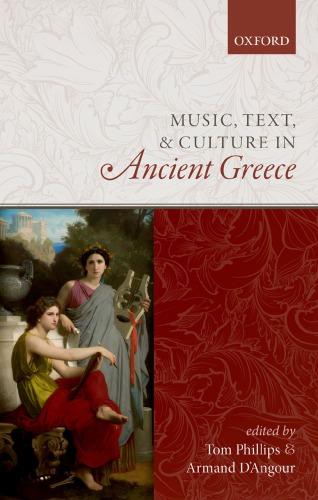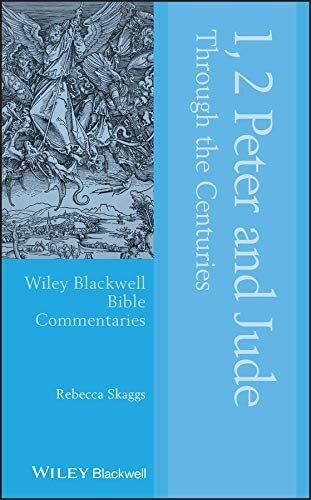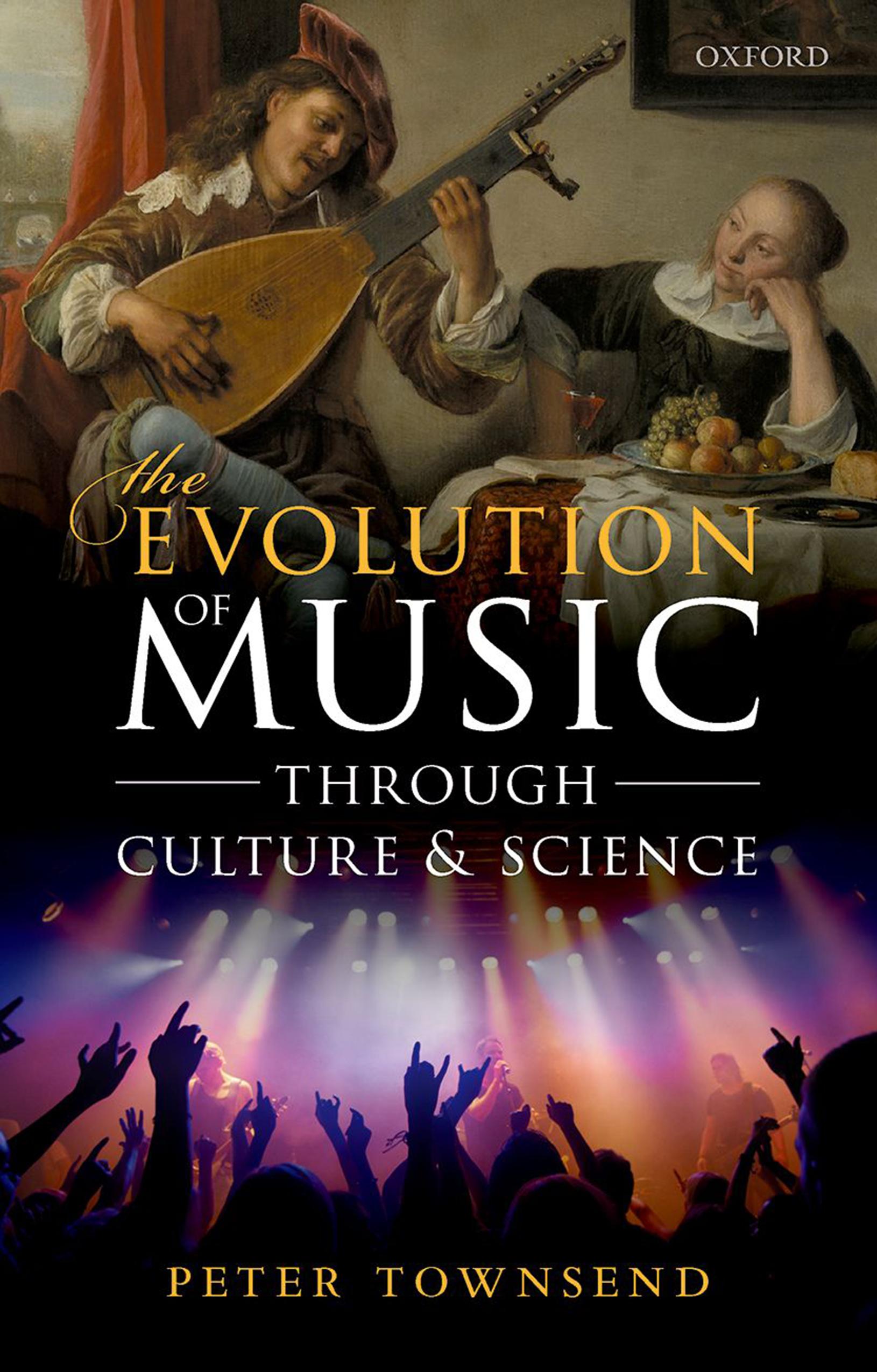MUSIC—AN EVER-CHANGING LANDSCAPE
The Universality of Music
Music is international, multi-cultural, and deeply embedded in the human psyche. Yet our understanding and appreciation of it is totally personal. Even our musical responses, tastes, and appreciation are never constant, but change continuously with time as the result of all our experiences. Musically we are influenced by everything we have ever heard, including sounds from new sources, as well as the result of repetition of the same items, and interpretations from different performers. Recordings are so accessible that we can hear the same works over and over again, a situation that was impossible just one or two generations ago. This may be progress, in terms of ease of access, but it may equally dull our concentration and appreciation. Trying to understand such a dynamic situation, and to consider if there are any clear patterns in the way we develop our enjoyment and understanding of music, is a difficult challenge. One example which emphasizes just how basic is our musical conditioning is that the music we hear while still in the womb has an influence on our future enjoyment and preferences for musical styles. This is probably not too surprising as the sounds we heard in the womb, such as our parents’ voices, were essential to help imprint our recognition of them once we emerged into the unprotected world. Nevertheless, this is a gem of information if we want a musical child, as we can influence the sensitivity and choice of music style by playing our preferred music to it in these crucial natal nine months. Not only is this useful information if we wish to raise a child with interest in a particular type of music, but such conditioning dramatically reveals the ability of music to influence us, and therefore it emphasizes how deep-seated is our human dependence on music. The Evolution of Music through Culture and Science. Peter Townsend. Oxford University Press (2020). © Peter Townsend. DOI: 10.1093/oso/9780198848400.001.0001
As we are growing up, our enjoyment, or dislike, of music is modified by our culture, our abilities, knowledge, nurture, and our previous musical experiences, as well as what we are currently hearing. Fortunately, we are not predestined to appreciate just one style of music, nor are we limited to one regional type. Many people have a moment of revelation when they hear a particular piece in an unfamiliar style and then embrace such music, and so broaden their horizons. These key step changes can equally be between ‘classical’, jazz, current pop styles, or even music from other cultures. Diversity in taste can offer great rewards.
Once we realize that we have the options to make changes, whether at 16 or 61, we can consciously influence our progress and enhance the pleasure. It is equally helpful to realize that, contrary to many claims, no one type of music is superior to another. There are just differences; although within each particular genre there will be performers who are more skilled or sensitive presenters of that style. Since we are not confined to enjoying just one musical style there is no limitation set by listening to classical music, and both adults and children should ignore pressures exerted by colleagues or school friends to only play fashionable music. This is often the case with children and pop music. As in other aspects of life, a degree in chemistry or physics does not inhibit us from reading fiction, languages, or philosophy, or writing poetry. We exploit just a fraction of our brain potential, and adding diversity to our activities enhances all of areas that interest us.
Musical influence, and preferences, will vary throughout our life, and we may take comfort in the observation that elderly people who suffer from variants of memory loss will invariably retain musical enjoyment, and be able to recall songs and their words, even if they do not recognize their own relatives. Even more positive is that music is well-documented to be a successful therapy for the elderly, and it extends mental activity.
The Aims of This Book
I have several related aims within the scope of this book. The first is to see if there is a pattern in the way in which music has evolved, and is evolving. Since it obviously is doing so, I also want to understand how this influences our appreciation and performance of music from different historical periods. The timescale is not just for works written in the past 200 years, but applies equally to why, and how, our taste and performance
standards are changing on the timescales of one or two decades. If we ask a rather trite and simplistic question such as ‘Can we ever hear or play the music of Beethoven in the way it was first performed?’, my answer is going to be a very definite ‘No’, as not only have the instruments and concert halls changed, but our musical and cultural backgrounds, and expectations, are incredibly different. I will attempt to justify such an emphatic position, but will do so with the happy realization that most people will probably gain more pleasure from the music now than was possible under the conditions when such works were first performed. The diversity of musical styles has also become available to a much wider spectrum of all the social classes.
The second broad objective is to indicate how science and technology have played a major role in the changing design of features as diverse as musical scales, construction of instruments, and concert halls. These non-musical changes directly influence both our enjoyment and the compositions appearing from composers of each generation. Inventions of new instruments is continuous and the new toys have instantly been exploited by both performers and composers. There has been an equally dramatic technological input that has emerged through recording, broadcasting, and concert hall amplification and, particularly because of the advances in electronics and recording techniques, so that we now have constant access to music from skilled performers.
Radio, vinyl discs, CD, MP3, MP4, and other versions of the music differ from live events because of differences between the acoustics of concert halls and home listening. Nevertheless, they colour our expectations of how music should sound. This is not automatically a bonus because the balance between instruments and between performers is generally quite different on a recording compared with listening to a live performance. One obvious example occurs with church organ music, which in the ambience of a large echoic building may not just be heard, but physically sensed, as the powerful low notes can be physically felt. The same performance heard in a normal room will lose all this stimulation and excitement. Further, the sounds are often ‘muddy’ and blurred because our home listening does not benefit from the long reverberation times, as music echoes around large church buildings.
There are differences in viewpoint as to which might be preferable, but live concert, broadcast, and recorded versions are best seen as complementary. The variations in each (even in the choice of concert hall
and seat) may be far greater than we would initially guess. I will offer some surprising comments on this topic! Our own inputs and responses are equally crucial, and certainly the level of concentration we put into each piece can be very different, and is never the same. In reality, this means we never hear an identical performance, even from a CD.
The electronic impact on music, during both composition and performance, has scarcely been felt compared with the potential changes one can envisage. I will make some predictions as to where this might lead in the future. As a scientist, my instinct is to say that I would hope that the developments driven by technology would be beneficial. But within most technologies we first focus on the benefits, but invariably we fail to recognize that there can be downsides. This is equally true for music, and I will comment on some major potential problems. I am sure that in 100 years from now, music, and the technologies of the way we play, present, and record the sounds, will be greatly different from those of today.
A Rapid View of the Content by Chapter
The chapter headings will track that we are in a continuously changing situation (Chapter 1), which is strongly defined, directed, and modified by technology (Chapter 2). In Chapter 3, I consider how musical taste is often a separate issue, and it can be easily influenced by the emergence of superstars and virtuosi. The two may, or may not, be synonymous. Certainly, in our own generation there are many examples where status, and image, are driven by profits and commercial hype from recording companies rather than ability.
Musical training and experience are very personal and difficult to quantify, but other features which have helped in the developments in music are much more tangible, and we can list and detail them. Our individual input is defined by the signal reception and processing with ears and brain (Chapters 4 and 5). There is the pragmatic fact that music uses a wide range of scales across the world (Chapter 6) which colour our preferences for music. More detailed examples of where technology has made major impact on instruments are considered in Chapters 7 and 8. Life is not all progress, and both data and knowledge are easily lost or fade away, so this is discussed in Chapter 9. Technological progress is equally transient and changing rapidly. This has driven many developments
in both electronic recordings and music (Chapters 10 and 11). Singing is a basic human activity, so I have included comments in Chapter 12 on how electronics can help in voice training and of course can help with electronic hearing aids. Finally, in terms of technology, there has been an immense, and valuable, impact from the sciences of acoustics and architecture, as sketched in Chapters 13 and 14. The final Chapter 15 looks into the realm of the psychological and physiological impact of music on our lives. It is deep-seated and powerful, but is so much part of life that we may not even recognize how it is used, and what it can achieve.
My progression of chapters has some logic, but I have tried to write the chapters so they could be skipped, or taken out of sequence, if that is your preference.
The Standard View of Musical Development
Many musicologists have written about the historical developments over the past few thousand years. The details for the earliest types of music, and how and why they changed, are often just intelligent guesswork, but the progressions over the past few hundred years are fairly well documented. They have a direct bearing on 21st century musical taste and appreciation. As one who is used to hearing European music, such writings on the older European work are generally helpful, as there have clearly been some patterns emerging that resulted from cultural, religious, or other historic influences. Perhaps surprisingly, because the thoughts are often in the realm of philosophy and opinion, there is a broad agreement in the assessment of key factors. I suspect this is because the earlier writers came from similar social backgrounds, and there was a tendency to quote earlier references. Modern writing is fortunately far more diverse and includes input from a wider range of people.
The lack of significantly different interpretations of musical development before say 1500 ad will reflect the fact that change and progress was very slow and, at least in European culture, was totally dominated by the church. By about 1500, the tight control of religion had weakened, and new ideas were emerging in literature and art, as well as some science, and all these factors were inevitably reflected in less stringent control of church music. That was also the period of the Reformation with schisms in religious beliefs, and again this led to diversity in both church and secular music.
I will capitalize on the existing writing about early musical history, and rapidly mention some of those cultural developments that have helped to shape our Western music. My only hesitation is that such perceived patterns are often rather philosophical views that are hard to quantify and substantiate, and the literature also has a weakness in that there are many cross references to a rather limited group of prime authors. Such a pattern does not constitute proof, but it indicates that there was a mainstream view on such changes. Certainly, not all factors have been included, and from the background literature one sees that very many articles and books are just centred on developments in Western music, particularly at the classical end of the musical spectrum. There are often only token references to musical developments in other cultures. This is unfortunate as the modern access to worldwide music needs to include a far broader perspective. Indeed, looking at the membership of current Western orchestras it is clear that many of the soloists, conductors, and players are contributing musical, ethnic, and cultural backgrounds with far greater diversity than existed even 30 years ago. Their influences will appear in the music.
Musicians in many countries with European links, such as the Americas, have strongly advocated developing national styles which are not repetitions of European music. These changes are global versions of the way Europe progressed in earlier centuries when there were fashions for, and against, French, German, Italian or other styles of compositions and playing techniques.
The standard summaries of Western culture use approaches that attempt to link musical evolution with increasing diversity and experimentation in the arts and literature of the various periods. Undoubtedly an overall cultural atmosphere which allows new ideas and opinions to flourish will be equally flexible with musical or scientific ideas. The reverse is also true, and in the 20th century the strictly applied state control in say Russia or Germany, had a very obvious effect on the styles of music that could be composed and performed. Political constraints imply economic constraints, which in turn influence and stifle the ability of musicians to perform and compose, because they need audiences and funding to further their creativity. Basically, for most composers, no money means no musical output. So, when the Western world was dominated by the church, then religious music was especially favoured, and predominant. Equally, nationalistic doctrines can cause a temporary stagnation.
Folk music is highly varied in objective, from simple pleasure, to work songs, country fairs, working in fields, co-ordinating sailors raising sails, and marching songs for the army. Music has a role in legends and history as well as ballads, so there has always been a wealth of opportunities for a mass market, and it had a separate and freer existence, being to some extent less controlled than music that was designed for religious purposes. The secular examples have run in parallel with ‘official’ music and, because the performers were frequently amateurs, not professional musicians, the songs, dances, ballads, and story lines needed to appeal to a wide audience. It also meant that the songs had to be tuneful and have mass appeal, so they could be remembered. This implies that they were of freer formats than those in more formal church items.
There are many examples of folk music that was transmitted entirely aurally, and for example in the Caribbean there are still small communities who sing and dance music that came from Africa two centuries earlier, when they became enslaved. None of this music has been written down, so it is vulnerable if the community disperses or dies out. Such heritage music and rhythms may differ considerably from other types of songs and dances.
The social divisions of music, and those writing about it, have often resulted in the popular folk music being underrated in the past. This sense that ‘classical’ is better than ‘popular or folk’ was epitomized in the first 30 years or so of the BBC, where there was great reluctance to have any music that was not pure establishment, with a nominally intellectual or educational content. Even the ‘light classic’ programmes such as the Grand Hotel Palm Court barely survived, despite the fact that such a programme had listening audiences that were more than ten times greater than for any other music programme. This is in complete contrast to the modern world where ‘classical’ music concerts and CD sales are very much a minority part of the overall wider musical scene. It is a salutary comment that vinyl disc sales by the Beatles exceeded the total of all the worldwide vinyl sales of classical music!
Further, attendance at ‘classical’ music concerts strongly suggests that there is a generational divide in which grey hair is a prerequisite for being in the audience. To me it is unclear if this is caused by a real switch in musical interest, a total lack of music teaching in many schools, or a younger generation who want instant communication, and cannot maintain interest in works for more than five minutes. There can also be
peer pressure in school and teenage communities, that ‘classical’ is not cool. I know of examples of skilled classical music teenagers who have given up, precisely because of peer group pressure. Attendance at many opera houses may understandably be limited to the grey-haired wealthy, as the price of the seats is invariably extremely high. To help with the high production costs, some opera events are now simultaneously relayed to perhaps a thousand cinemas, or on TV. The seat cost is much lower, and the close-ups far better than one can see in the live performance. However, as always, there is a trade-off between the electronically modified acoustics, and the overview of the actions on stage. Financially, this may not be as rewarding as one might imagine, at least back in 2010, when the Metropolitan Opera in New York only gained ~$11 million to offset annual production costs of $325 million. However, the practice is now far more fashionable. Cinemas gain particular benefit as the performance times are often early afternoon, when there are normally few customers. In the UK, cinema income from this source rose from almost zero in 2009 to more than £40 million by 2014.
The Role of the Renaissance and Reformation
Before looking at pre-history or the music of ancient civilizations I will start at a time when there were manuscripts and comments on Europe in the Middle Ages. For us in the 21st century, it is extremely difficult to imagine life in Europe in the Middle Ages, but without doing so we cannot put their music into perspective. In the period from say 1400 to 1500 ad most European capitals and major cities had populations of well under 100,000 people. There was an immense divide between the few in the rich or ruling classes, and the bulk of the population. Crucially, the people were deeply religious and superstitious. While the favoured classes had time to pursue or patronize musical activities, the overall pattern of music was strongly defined by the church, and any music that might be considered joyful was in danger of being considered sinful. So this was not an ideal time for musical innovation, especially in church music. Church control of music, science, or even the colours that could be used in painting, were evident and enforced. For a city such as London, with population of under 80,000 (including women and children), one may guess that the number of professional musicians and composers would have been no more than a few hundred men (women were less
likely to be composers at that stage). By contrast, modern London has at least 8 million people with musical input from both men and women, from all social classes, and with a far greater adult life expectancy in which they can be musically productive. London is now also more varied, as estimates suggest that more than 30 per cent have grandparents from other nations across the world. Musical and cultural diversity has thus flowed into this generation.
However, during the latter part of the Middle Ages there was a steady pressure to challenge the church control, and innovation crept in and changes were accepted in aspects of painting, literature, science, and music. It was not a true break from religious controls, but it allowed a wider diversity of musical composition. Many people have recognized that one key aspect of the cultural change was to shift the emphasis from all things being centred and controlled by religion, to a development which allowed some individuality. This trend evolved into the now familiar cult of the personality. Musical compositions were allowed to be attributed to specific composers, not some unnamed monk (Anon was a very prolific composer). There was experimentation with new instruments, and tonal patterns, chords, or singing in parts, rather than the single lines we think of as early monastic church music. Another critical key technological advance was the introduction of musical notation that could be written down, and together with the printing press, it meant that music could be disseminated in bulk, not just by hand-copying. Here was a real bonus of a technological input.
The broad term of a Renaissance, which certainly occurred in art and literature, is usually cited as driving the progress in musical styles. This is partially true, but the more obvious effect for music may be the growth of emphasis on an individual performer. This has steadily moved to the present day with the acceptance of superstars in terms of composers, musicians, and conductors, as well as high-profile personalities in TV, film, or mass media that we seem to crave nowadays. A sociologist might ponder whether our focus on superstars is another version of Greeks and Romans inventing the stories about their many superhero gods.
My Analogy of Music as a Garden
In many ways, I feel the standard imagery of linking music to art and literature is quite limiting. Instead, I would prefer an analogy between
music and gardening. Music and production of vegetables are essential foods for the mind and body, and the flowers add perfume, beauty, and intangible escape from the realities of daily life. The things we grow are increased by the introduction of new products from more distant countries (maybe mundane potatoes, or exotic spices) and their form and taste are evolved by our selective retention of particular variants. To enjoy the garden, we do not need to know the names of the plants or where they came from (unlike the interpretation of paintings or literature). Music fits this pattern perfectly, and even today we see classical music being revised by sounds of jazz, South American dance, Indian instruments, or African rhythms etc. Survival of earlier music has had the same fate as early plants. Good apple varieties are often displaced by supermarket forces, even though they had taste and texture that may now be lacking. Vegetables are often bug free, not because they are better, but because no self-respecting bug would eat them. There are parallels between the former garden plants and music, as modern musicologists are trying to popularize earlier works. With an improved understanding of genetics, modern biologists are attempting to preserve seed banks, and have repositories of rarer plants to minimize total extinction. Recording systems are doing the same for less popular music, both from ancient to modern works.
The compositions of many prolific composers have been almost totally lost by changes in public fashion. Survival of others has happened via revivalist crusades by a very few individuals. Compositions by people such as Corelli, Bach, or Monteverdi (who were eminent in their day) faded from the repertoire, and were only reintroduced through good publicity. Their work has re-entered the lists of popular musicians. However, for many other composers, who may have had greater fame and prominence in the past, their work is now hidden in the shadows, or totally lost.
I also like the gardening analogy because it has a far more universal perspective than comparisons with art or literature. Crucially, it is language independent. Operatic arias and songs can be enjoyed quite independently of our knowledge of the language being used, just as we may enjoy food or perfumes without knowing the name. Indeed, I have often felt that once one understands the text of many operas, then the weaknesses of the libretti, or the trivialities of the words, means that knowing the language could actually detract from the pleasure of the
sound. Such a comment needs clarification, as when listening to operatic music I find the music is crucial and the language unimportant. However, if I am actually watching an opera I need the background plot, and then the super-title translation of the text is valuable. Similarly, silently watching a foreign film with subtitles is not enough, and I still need the sound track, even if I understand only a few of the spoken words. The music of speech conveys far more emotive content than written subtext words.
My garden flower version of this is that cut flowers in the house can be admired for their colour, form, and beauty, but in the garden, one must see them in the context of the other plants, and the perfume of the flowers is much more important to make them stand out from the crowd. In both cases, we are benefitting from the standard human response that more than one type of simultaneous stimulation (sound, sight, smell, or touch) of an event, enhances our overall sensitivity. The downside of this effect is that listening to recorded music is potentially less exciting than hearing a live performance, and we can readily be distracted by other activities.
This is very obvious when I go to local concerts by people who are not professional performers. They are typically good musicians, but not world class. However, such local live events are more than just enjoyable and satisfying, as there is the magic of immediate presence with the performance. Often the theatres tend to be small and intimate, and when sitting directly next to a floor-level stage at an opera such as La Bohème, it is incredibly emotionally moving, at a level one rarely experiences at long range, separated from the stage, in a fullsize opera house. The same bonus emerges when comparing the live instrumental concerts with top flight performers on a CD with home acoustics.
This need for actual participation, or presence at an event, is equally true in most aspects of life. Millions will sit at home and watch football in the warmth and comfort of their homes. They are not actually watching the total game, just the limited view and highlights selected by the camera team. Going to the stadium, in the cold and rain may be more expensive, but it gives the total perspective of the play, plus the high emotion generated by all the other spectators. The only higher level is to be one of the players. I know from my own experience that competing (in my case fencing) is emotionally satisfying (even when losing), and
watching is not. Similarly, in a string quartet the best seat for total involvement is when playing with the other three.
A Difference Between Music and Art
Many music historians draw close analogies between the changes in art and music. There are some, but comparisons of music with art are weak, because a painting is static and fixed in the time, format, and perspective or the painting techniques in use when it was created. Not only is it locked in time but viewing it may well depend on a great deal of historic knowledge to recognize the symbolism, mythology, allegorical or other identifying signs, and artefacts shown on the pictures. There is also the dilemma that, without a catalogue or description, we will not know who the people are meant to portray. By contrast, we can interpret music as we wish, and, if we choose, modernize the performance through new interpretations, even for a 400-year-old composition. We are not restricted and can play works with different instruments. Reference to any modern CD catalogue will show just how many performers think they can provide a new, or better, take on classical favourites. My comparison with a garden is that we can find beauty in the flowers from shape, colour, and perfume, and it is never static. Plants grow and change as does our musical appreciation. New features continually come and go and there will be weeds or mistakes. Overall, the appearance depends on the soil, the layout, and the gardener. Even if many people praise the garden, then no two will ever see it from the same perspective, or detect the subtle perfumes in the same way, nor will we ever see the same garden in an identical way on successive visits. For me, such variations offer the pleasure of a garden, and are exactly the same factors which provide the excitement and individuality of musical performance and listening.
The Earliest Signs of Music
I will briefly follow the standard pattern of describing musical development from pre-history to say the 17th century. From there forward, we will be solidly into the music which routinely appears in concerts, and on radio and TV broadcasts. This is not to say earlier music is not performed (and enjoyable), but only that there are some real differences in why it was written, and the intended audiences for the music.
Once we became articulate humans and listened to the songs of birds, and the other sounds in our world, it seems inevitable that we would try to emulate some of them, and our attempts would lead into singing. Archaeologists have found bone-flutes dating from before the last ice age. In at least one example, found in southern Germany, a flute has been carbon dated to more than 30,000 years old. This flute, and related artefacts, may not have been only for music, but perhaps served as bird lures. Nevertheless, they show an initial excursion into musical instrument making, because this flute, with four holes, was clearly quite a sophisticated item to manufacture, needing both musical and mechanical skills.
Archaeologists have identified other items they think had musical usage, from as early as the Palaeolithic, and also from Neolithic times. These have been discovered in many parts of the world. Other obvious basic instruments that were easy to construct include clapping sticks, gourds, and drums. Variations in drum size indicate that several notes were in use, and this is the same pattern as has been noted in current tribal societies. In terms of simple instruments standard guesses are that a plucked string, blowing into reeds and hollow tubing, or banging on pieces of metal would all have taken us on our first musical steps. All these have appeared in carvings from earlier civilizations across Africa and Asia. There are cave paintings and carvings, with such instruments being in use for at least some thousands of years. The much later Egyptian cultures have clear images of musical performance for pleasure with instruments recognizable as variants of items such as harps, drums, and lutes. Carvings, as in Assyrian examples, have trumpet style instruments in battle scenes. According to the book of Daniel in the Bible, in Babylon, King Nebuchadnezzar had a royal band with brass, wind, and string instrument, together with drums. Religious images from many faiths across the world have similar identifiable instruments.
The images on carvings and paintings probably refer to specific events, so the instruments were being used as status items for special occasions. Other instruments existed for non-ceremonial purposes, and ancient Greek culture routinely employed musical entertainers for social events for the men at home. The entertainers were usually women, in the case of the Greeks. Such an historical pattern is not confined to the Western world and equally clear examples of closely related variants of these instruments and usage appear from Chinese to South American carvings and paintings.
